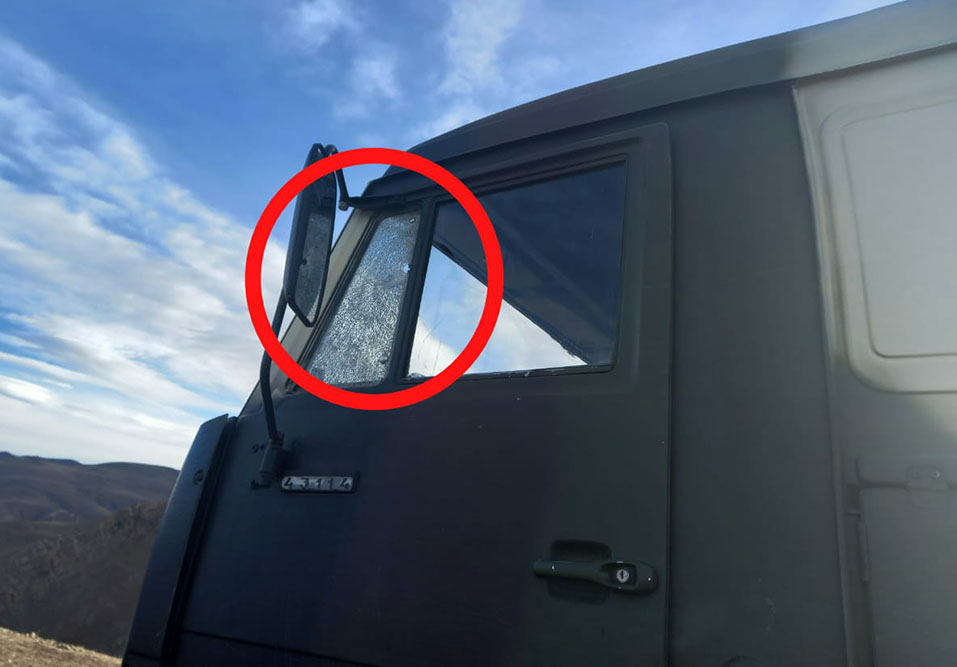The provocation of the Armenian armed forces, which began with the intense shelling of Azerbaijan’s border military positions, escalated into the heaviest clashes since the last year’s war between the two countries.
According to Azerbaijan’s Defense Ministry, on Tuesday morning, Armenian military launched a massive attack in order to capture the high grounds and take more advantageous positions in the direction of the Kalbajar and Lachin regions of the state border.
“Armenian military units, assembling additional forces, special military equipment at the border combat positions in the Basarkechar and Garakilsa regions, attacked the combat posts of the Azerbaijan Army in the Kalbajar and Lachin regions,” reads the statement issued by the ministry.
“The opposing side intensively fired the positions of the Azerbaijan Army using weapons of various caliber and grenade launchers, and damaging the combat posts.”
Following Azerbaijani military's decisive measures, Armenian servicemen have been disarmed and detained, a large number of weapons of various calibers, and a large amount of ammunition have been seized as trophies. According to preliminary data, two Azerbaijani servicemen have been injured. The ministry said they have been given urgent aid and their lives are not in danger.
Meanwhile, Russian Defense Minister Sergei Shoigu made phone calls with his Armenian and Azerbaijani counterparts and “expressed readiness to make efforts to end military operations and stabilize the situation.”
The recent confrontation between Armenia and Azerbaijan began earlier this month. Over the last few days, Armenian armed forces have repeatedly shelled the Azerbaijani positions along the borderline between the two countries.
On November 9, around sixty Armenian servicemen moving in the direction of Lake Garagol of the Lachin district tried to block the way between the Azerbaijani military positions located on this section of the border. Azerbaijani armed forces foiled this attempt of the Armenian military. On the same day, heavy equipment of the Azerbaijani military was also subjected to fire in Kalbajar.
On November 14, the Armenian military regrouped personnel and equipment to the Armenia-Azerbaijan borderline in the direction of Azerbaijan’s Lachin region — the move Azerbaijan’s Defense Ministry described to be preparations for the next armed provocation.
On November 15, the Armenian armed forces shelled the Azerbaijani military’s positions in Kalbajar district located on the border with Armenia. In addition to military positions, equipment as well as vehicles transporting supplies for the Azerbaijani army have been fired by Armenians.
Meanwhile, Armenia’s Prime Minister Nikol Pashinyan accused the Azerbaijani army of the recent flare-up on the border. He said that the units of the Azerbaijani armed forces allegedly attempted to advance their positions “on one of the eastern sections of the Armenian-Azerbaijani border.” Amid these tensions earlier this week, Pashinyan sacked Defense Minister Arshak Karapetyan and confirmed his deputy Suren Papikyan to replace him.
Spokesperson to the Foreign Ministry of Azerbaijan, Leyla Abdullayeva, dismissed the Armenian prime minister’s claims. She said the Azerbaijani servicemen perform their duties in Azerbaijan's sovereign territories, and the military-political leadership of Armenia should bear responsibility for the ongoing tensions.
Escalations along the Armenia-Azerbaijan border have been ongoing since May 2021 following a bloody war between the sides in the latter’s Karabakh (Garabagh) region last year. As a result of the 44-day war that broke out on September 27, 2020, the Azerbaijani army liberated over 300 settlements, including five major cities, from nearly 30-year-long illegal Armenian occupation. The war ended after a tripartite statement was signed on November 10 by Armenia, Azerbaijan, and Russia. Armenia returned three more districts to Azerbaijan’s control as part of its obligations under the agreement.
Azerbaijan restored control of a larger portion of its 1,007-kilometer borderline with neighboring Armenia after the districts of Zangilan, Gubadli, Kalbajar, and Lachin were liberated in 2020. After regaining access to the border, Azerbaijan rolled out border protection measures.
The Azerbaijani government has been calling on Armenia’s authorities to recognize each other’s territorial integrity and borders and start working on delimitation and demarcation procedures. Baku is convinced that there should be a peace agreement between Armenia and Azerbaijan.







 Iran's senior military leaders described the drone and missile attack on Israel on April 14 night as “successful".
Iran's senior military leaders described the drone and missile attack on Israel on April 14 night as “successful".
 The number of evacuees from flooded areas in Kazakhstan has reached 97,852 people, including about 32,856 children since March 27.
The number of evacuees from flooded areas in Kazakhstan has reached 97,852 people, including about 32,856 children since March 27.
 Iranian President Ebrahim Raisi warned Israel that it would face a "real and extensive" response if it makes any "mistake" following Tehran’s missi...
Iranian President Ebrahim Raisi warned Israel that it would face a "real and extensive" response if it makes any "mistake" following Tehran’s missi...



